Every lab has it—that one thing that is always in short supply no matter how many you order. What is your lab’s “red sharpie”?
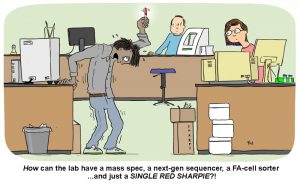
If you like this cartoon, there are more like it in our Cartoon Lab.
Every lab has it—that one thing that is always in short supply no matter how many you order. What is your lab’s “red sharpie”?

If you like this cartoon, there are more like it in our Cartoon Lab.
Forensic lab validations can be intimidating, so Promega Technical Services Support and Validation teams shared these tips for making the process go more smoothly.
Need more information about validation of DNA-typing products in the forensic laboratory? Check out the validation resources on the Promega web site for more information for the steps required to adopt a new product in your laboratory and the recommended steps that can help make your validation efforts less burdensome.
Today’s blog post is written by guest blogger Sarah Kolb, Marketing Coordinator for our North America Branch, and new employee at Promega.
As a new member to the North America Marketing team, I was unsure of what to expect going into my first national sales meeting with Promega, but what I took away from this meeting was incredibly eye opening. The North America Branch Sales meeting is an opportunity to get all of the members of the North American branch together to learn about new products, connect with the different strategic business units about product application and network with each other to learn how to better the lives of our customers. The year’s meeting occurred in May in the Ideation room at Promega Headquarters in Madison, Wisconsin.
The room itself is not your typical conference space. An antique car resides in the space, and you can find art-work from all over world nestled in corners, and on the walls and shelves. All around the room, collections of unique furniture are arranged to stimulate conversation. Ideation created an atmosphere of creativity, community and collaboration, which contributed to the overall success of the meeting.
I felt excitement Monday morning as the 62 attendees gathered in the space. Everyone greeted each other with big smiles and hugs, asking about families, travels and already discussing business. Continue reading “What I Learned at My First Branch Meeting: Gratitude, Service and Collaboration”
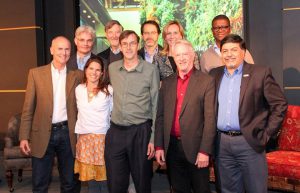
Co-coordinated and co-hosted by the BioPharmaceutical Technology Center Institute (BTC Institute) and Promega Corporation, the International Forum on Consciousness – Awakened Consciousness and the Evolution of Business, was held on May 5–6, 2016.
The Forum is designed to bring together people from diverse perspectives and professions to facilitate public dialogue regarding complex and challenging issues. This year, our intent was to respond to voices of wisdom and action that call for a shift in the consciousness of organizations that affect the lives of so many and planet Earth. Key among the questions we asked: How does the self-actualized business become a model and advocate for change?
Our sense is that those who joined us left both more knowledgeable and inspired. Comments from participants illustrate the importance of offering this opportunity, as well as deep appreciation for our presenters’ experience and insights:
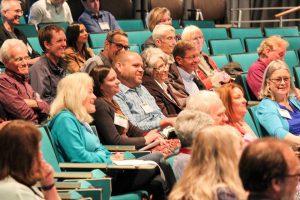
Diverse perspective relatable to many – excellent… overall, engaging, fascinating, action oriented…
Thank you so much for the wonderful program. The diversity of speakers, viewpoints and topic was really enjoyable and provided great room for thought. It was truly impressive. Wonderful & kudos to the organizers and all the work and thought to create this program.

An amazing experience, potentially life changing (we’ll see…). Really top notch, felt like a series of TED talks, but with the added benefit of in-person interaction and a cohesiveness of topics.
Sound interesting? There are several ways you can learn more about the Forum and get a meaningful taste of what these attendees are describing:
If you’re not on our mailing list and would like to be, just let me know (karin.borgh@btci.org) – hopefully, we’ll be offering a program of interest to you in the days ahead!
In 2014, Promega created a special incentive to reward field science consultants who help the scientific community take advantage of our on-site stocking program. The winners had to meet ambitious criteria to receive 2 round-trip tickets to anywhere in the world, a week of paid vacation and spending money. Our four winners from 2014 will share photos and stories about their journeys in a semi-regular Friday feature on the Promega Connections Blog.
Today’s travelogue is Part I of the adventures of Sarah Theos, a client support consultant, who used her award to travel to New Zealand.
Introduction
We went to New Zealand the first two weeks in December and were surprised that there was hardly anyone there. We had long stretches of the road entirely to ourselves and felt like we were the only ones around on many of the hikes. It was a magical feeling to take in the gorgeous scenery without another soul for miles. We, of course, purchased a book that told us about all of the “off the beaten path” hikes and sights that we must do and tried to check them all off the list! The locals were also extremely friendly and eager to chat. If we did come across any locals on the trails, they always stopped to talk and were eager to hear about where we were from and how we like the island so far. It was the beginning of summer so the days were long with the sun rising before 6am and setting around 10pm. We had plenty of daylight hours to explore.
Day 1: Christchurch
Starting in Washington, DC, we traveled over 29 hours door to door to get to Christchurch, NZ. Since we arrived around 7am, we decided to fight off the jetlag and go out to explore the city. I wasn’t quite sure what to expect in Christchurch, knowing that it suffered two devastating back to back earthquakes in 2010 and 2011. My first impression was that there were a lot of gravel parking lots everywhere and boarded up high rises. It looked like a ghost town. We checked into our hotel (built after the earthquakes) and took a walk down to the City Centre. The once beautiful cathedral sat in ruins, surrounded by large buildings in various states of decay. It was a sad sight to see. We then walked further down the street to the botanical gardens. The gardens are beautiful and we spent quite a while admiring the stunning Rose Garden. After exploring the gardens, we decided to drive up to the gondola to explore the city from a different angle.
The gondola takes you up to the top of Port Hills, about 500 meters above sea level. At the top you can see a 360 degree view from the Pacific Ocean and Christchurch to the Southern Alps and the surrounding Canterbury plains. We hiked to the top of Cavendish Bluff to take in the beauty. After the gondola ride, we decided to drive a little ways up the Banks Peninsula to Governor’s Bay where we found a cute little pub. Exhaustion set in around 5pm so we decided to head to a grocery store to stock up on snacks and water in preparation for our drive to the wild, west coast the next day. We passed out around 8pm. Continue reading “Exploring the Land of the Silver Fern: South Island of New Zealand—Part I”
Today’s #FridayFeeling is one of gratitude for all of those people who do the things that make our lives easier: lab techs, work-study students, undergraduate assistants. They put up with our requests and changes of mind and help keep our laboratory glassware clean, solutions sterile and experiments running. Do you have someone who helps you keep your experiments up and running?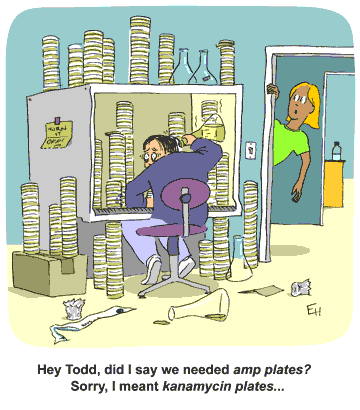
In today’s post, guest blogger, Martha O’Brien, PhD, provides a preview of her upcoming AAI poster and block symposium talk on the inflammasome, caspase-1 activity and pyroptosis.
Responding rapidly to microbial pathogens and damage-associated molecular markers is critical to our innate immune system. Caspase-1 is pivotal in this process leading to processing and release of essential cytokines and an immunogenic form of cell death, termed pyroptosis. Upon sensing pathogen-associated and damage-associated molecular patterns (PAMPs and DAMPs), innate immune cells form inflammasome protein complexes that recruit and activate caspase-1 (canonical inflammasomes). In addition, other inflammatory caspases, 4 and 5 in humans and 11 in mice, directly bind bacterial lipopolysaccharides (LPS), triggering pyroptosis (non-canonical inflammasome). LPS-triggered non-canonical inflammasomes in mice and humans ultimately lead to canonical inflammasome engagement and caspase-1 activation (1–3). Caspase-1 was originally termed interleukin converting enzyme (ICE) for its well-established role in processing IL-1ß and IL-18, two important inflammation cytokines. How caspase-1 mediates pyroptosis is less well understood, but is beginning to be delineated. Recently, a substrate of the inflammatory caspases, gasdermin D, was identified and its processed fragment, gasdermin-N domain, was shown to be required for pyroptosis in non-canonical inflammasome circumstances (4, 5). The precise role of gasdermin D in canonical inflammasome-triggered pyroptosis is still under investigation. Linking inflammatory caspases directly to pyroptosis is a notable step in understanding the mechanism of this important form of cell death.
Pyroptosis is clearly one means of releasing processed IL-1ß and IL-18 from the cell. However depending on the cell type and stimulus, there is evidence for inflammasome engagement, caspase-1 activation, and release of IL-1ß in the absence of cell death (6, 7). On the flip-side there is also evidence for caspase-1 mediated pyroptosis that helps clear bacteria, independent of IL-1ß and IL-18 involvement (8). To enable further studies on the inflammasome and in particular, assessing the connections between caspase-1 activation, pyroptosis, and cytokine release, Promega developed a new tool to conveniently monitor caspase-1 activation, the Caspase-Glo® 1 Inflammasome Assay. This bioluminescent, plate-based assay is used to measure caspase-1 activity directly in cell cultures or to monitor released caspase-1 activity in culture medium from treated cells. This flexibility allows easy multiplexing to monitor all three outcomes of inflammasome stimulation; caspase-1 activity, pyroptosis, and release of IL-1ß and IL-18. Caspase-1 activation typically is monitored indirectly with western blots of processed caspase-1. Now the activity of the enzyme can be monitored directly, providing accurate information on temporal aspects of the inflammasome. The assay can be readily combined with real-time measures of cell death (e.g., CellTox™ Green Cytotoxicity Assay) and some of the culture medium can be removed for IL-1ß/IL-18 assessment, leaving the cells and remaining culture medium for caspase-1 activity measurements.
References
Have you ever thought about life from the point of view of a Helix® On-Site Smart Inventory Unit? We did, and this is what we imagined…
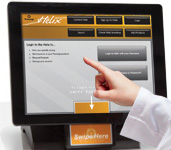 Wow! There were a lot of people in and out of here today.
Wow! There were a lot of people in and out of here today.
The post doc who never goes anywhere without her earbuds in. I wonder what her research playlist is, she’s always dancing her way in and out of the hall. The new grad student in the virology lab next door. He’s looking a little lost right now.
And of course there’s the PI with the big boots. Never looks where he’s going and constantly almost plowing people down. It’s kind of funny actually, the near misses I’ve seen between him and grad students running out of here with that key reagent they need to finish those last few reaction tubes.
There was a big-name speaker today for the lunch time journal club, so there was a lot of activity on the hall this afternoon. Lots of talking about the presentation. Everyone sounded pretty excited about what they heard.
But now it’s quiet. Most people have gone home for the evening.
Except for the security lighting, the hall is dark.
Oh wait, I hear footsteps heading my way. Apparently, not everyone has stopped work for the day, apparently.
Oh, it’s you. One of my favorite after-hour scientists.
You open the door to the common room, and check the product list on your phone: 100bp DNA ladder … there’s one left. Drawer D.
You pull the pass out of your pocket. I scan it. Click. The door unlocks. You grab your package and let the door close.
I’ll take it from here so that you can get back to work.
Your pass tells me that you’re a post doc in a lab upstairs. After you close the door, I check to see what you took. My scan reads the tag on each reagent. G2101: 100bp DNA ladder. Drawer D.
That was the last one. I update the inventory list. More will arrive in the next resupply shipment.
I send you an email with the details.
Time to check my systems.
Power? Check.
Connection to Promega? Check.
Door closed and locked? Check.
Storage temperature holding steady? Check.
All reagents present? Check.
The lights go dark as I transmit the report back home.
In 2014, Promega created a special incentive to reward field science consultants who help the scientific community take advantage of our on-site stocking program. The winners had to meet ambitious criteria to receive 2 round-trip tickets to anywhere in the world, a week of paid vacation and spending money. Our four winners from 2014 will share photos and stories about their journeys in a semi-regular Friday feature on the Promega Connections Blog.
Today’s travelogue is Part IV and the final installment of the adventures of Mica Zaragoza, a senior client rep in Chicago, IL, who used his award to travel to Australia and New Zealand.
Walking out of our room into the open air, Queenstown instantly provided a lasting impression. Nestled along Lake Wakatipu, watched over by the Remarkable Mountains, the city feels like Aspen on steroids—it’s no wonder there’s such an international pull for young travelers and skiers.
We jumped right into exploring with a gondola ride. This photo is my best attempt at capturing Queenstown from high above. Continue reading “There and Back Again: Part IV (South Island, New Zealand)”
In 2014, Promega created a special incentive to reward field science consultants who help the scientific community take advantage of the our on-site stocking program. The winners had to meet ambitious criteria to receive 2 round-trip tickets to anywhere in the world, a week of paid vacation and spending money. Our four winners from 2014 will share photos and stories about their journeys in a semi-regular Friday feature on the Promega Connections Blog.
Today’s travelogue is Part III of the adventures of Mica Zaragoza, a senior client rep, who used his award to travel to Australia and New Zealand.
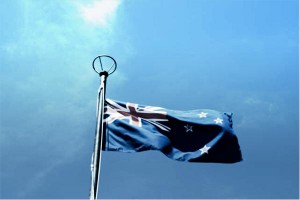 After a day of travel, including a quick stop-off in Sydney, we arrived late in New Zealand the evening. New Zealand is an island nation with strict customs requirements, having been stung in the past by a decision to import the opossum.
After a day of travel, including a quick stop-off in Sydney, we arrived late in New Zealand the evening. New Zealand is an island nation with strict customs requirements, having been stung in the past by a decision to import the opossum.
Jumping full into the experience, we rented a car (5-speed) and headed into the City to scope out our hotel ( more on the car later).
During our time in Australia, we had spoken with several travelers who had visited Christchurch for their recommendations. Without fail, their response was negative, using words like “destroyed” and “rubble” to describe the city. They referred to a series of earthquakes in 2011 that crippled the city of Christchurch; the residents were not aware of the risk and structures in the city had not been constructed to withstand such devastation. Continue reading “There and Back Again 3: Christchurch, New Zealand (South Island) Travelogue”